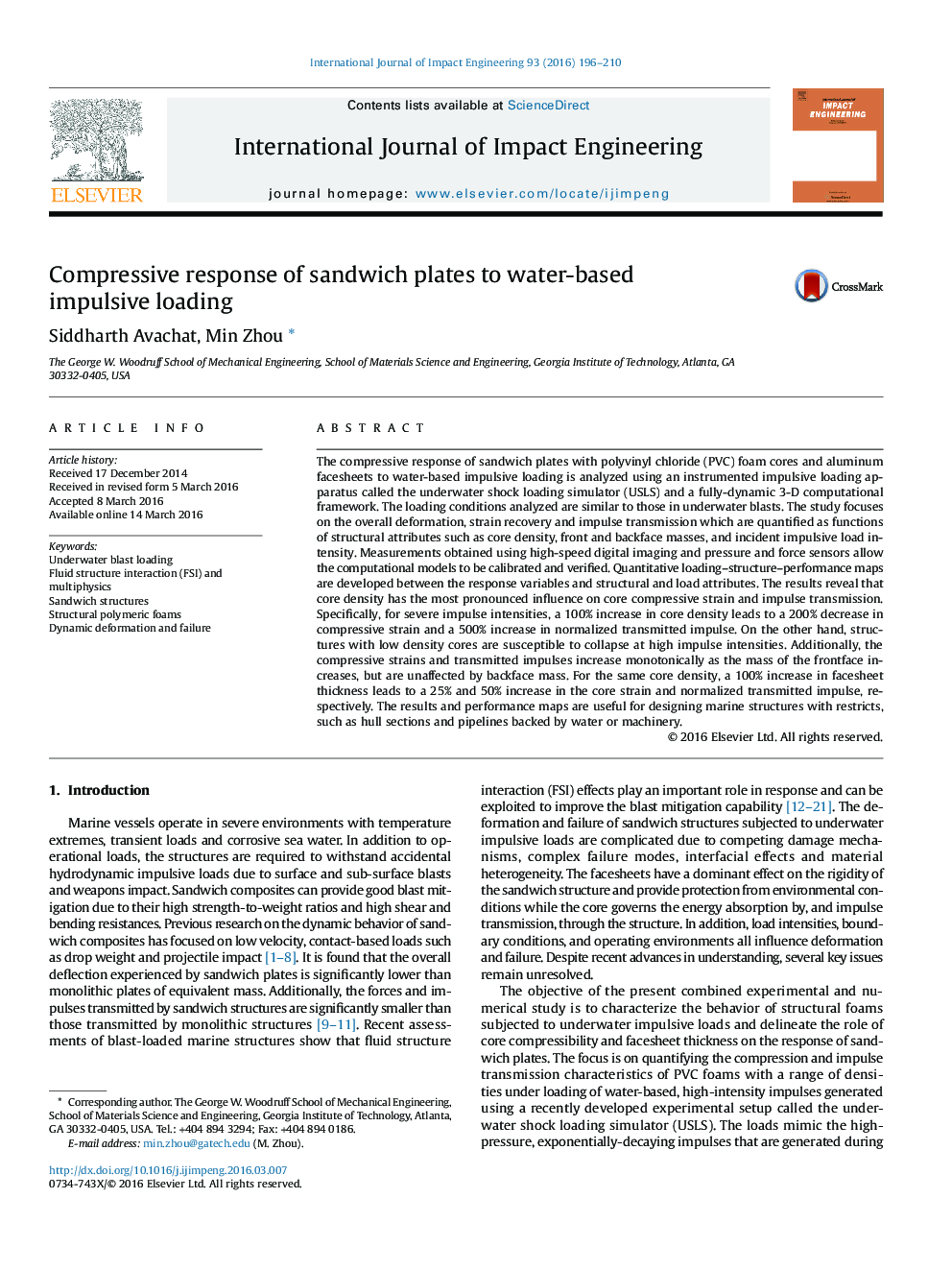| کد مقاله | کد نشریه | سال انتشار | مقاله انگلیسی | نسخه تمام متن |
|---|---|---|---|---|
| 782751 | 1464058 | 2016 | 15 صفحه PDF | دانلود رایگان |
• Novel experiments are carried out to quantify the response of rigidly supported sandwich plates to water-based impulsive loading.
• Experiments and simulations account for a range of structural attributes and loading conditions.
• Analyses focus on rigidity, core compression, and impulse transmission of different structures and the interplay among the factors.
• Loading–structure–performance maps are developed to quantify response and provide guidance for design of structures to maximize blast resistance.
The compressive response of sandwich plates with polyvinyl chloride (PVC) foam cores and aluminum facesheets to water-based impulsive loading is analyzed using an instrumented impulsive loading apparatus called the underwater shock loading simulator (USLS) and a fully-dynamic 3-D computational framework. The loading conditions analyzed are similar to those in underwater blasts. The study focuses on the overall deformation, strain recovery and impulse transmission which are quantified as functions of structural attributes such as core density, front and backface masses, and incident impulsive load intensity. Measurements obtained using high-speed digital imaging and pressure and force sensors allow the computational models to be calibrated and verified. Quantitative loading–structure–performance maps are developed between the response variables and structural and load attributes. The results reveal that core density has the most pronounced influence on core compressive strain and impulse transmission. Specifically, for severe impulse intensities, a 100% increase in core density leads to a 200% decrease in compressive strain and a 500% increase in normalized transmitted impulse. On the other hand, structures with low density cores are susceptible to collapse at high impulse intensities. Additionally, the compressive strains and transmitted impulses increase monotonically as the mass of the frontface increases, but are unaffected by backface mass. For the same core density, a 100% increase in facesheet thickness leads to a 25% and 50% increase in the core strain and normalized transmitted impulse, respectively. The results and performance maps are useful for designing marine structures with restricts, such as hull sections and pipelines backed by water or machinery.
Journal: International Journal of Impact Engineering - Volume 93, July 2016, Pages 196–210
